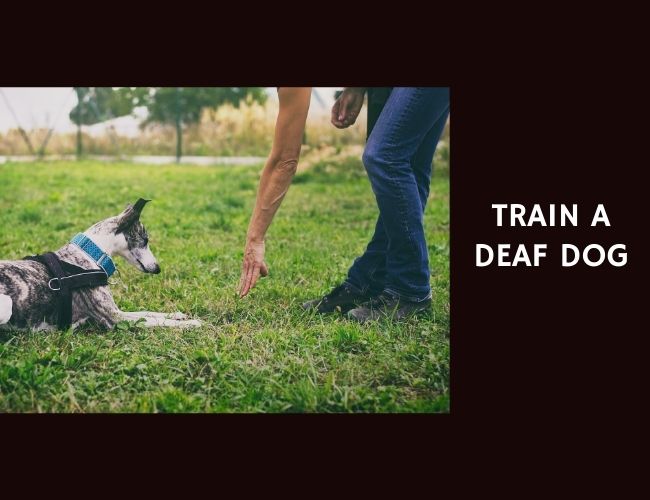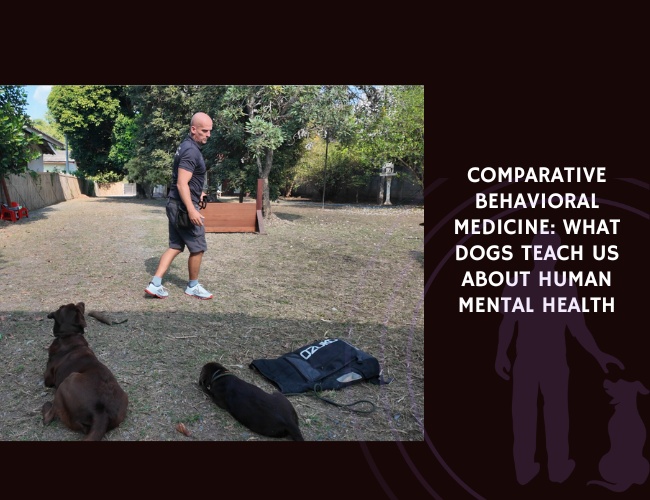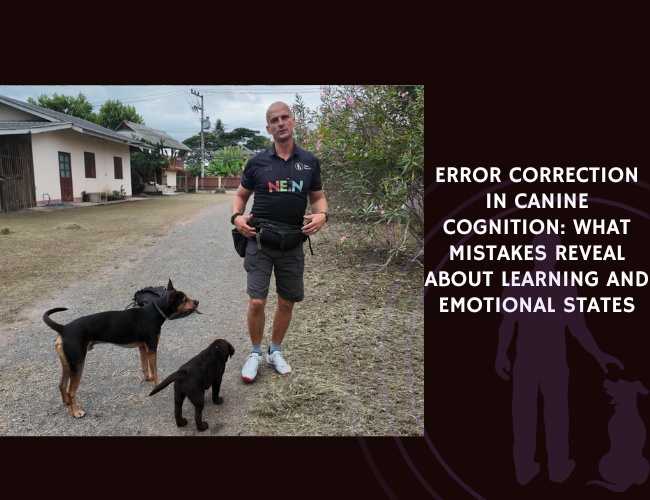Introduction: Embracing the Silent Bond
When you first meet a deaf dog, you might notice something extraordinary—their eyes. These remarkable companions watch the world with an intensity and focus that hearing dogs rarely match. Their gaze follows your every movement, reading your body language with the precision of a skilled interpreter. This heightened visual awareness isn’t just compensation; it’s a superpower that, when properly channeled, creates bonds of exceptional depth and understanding.
Living with and training a deaf dog presents unique opportunities rather than insurmountable challenges. These special dogs navigate their world through enhanced senses of sight, smell, and touch, developing cognitive adaptations that often make them more attentive partners than their hearing counterparts. Whether you’re considering adopting a deaf puppy, have recently discovered your senior dog’s hearing loss, or work with deaf dogs professionally, understanding their unique learning processes transforms what might seem daunting into an enriching journey of interspecies communication.
The path to training a deaf dog requires adjustments in our approach, not compromises in our expectations. These intelligent, capable animals can learn everything a hearing dog can—from basic obedience to complex tricks, from becoming therapy dogs to excelling in dog sports. They simply need us to speak their language: the universal language of visual and tactile communication that, once mastered, opens doors to profound connection. 🐾
Understanding How Deaf Dogs Learn
The Science of Sensory Compensation
When auditory input disappears, something remarkable happens in the canine brain. Just as humans who lose one sense often experience enhancement in others, deaf dogs undergo neurological adaptations that reshape how they perceive and interact with their environment. This sensory compensation isn’t merely about using eyes more—it involves actual changes in how the brain processes information.
Research in comparative cognition reveals that deaf dogs develop enhanced visual processing capabilities, often noticing subtle environmental changes that hearing dogs might miss. Their peripheral vision becomes more acute, and they become masters at reading micro-expressions in human faces. This heightened visual awareness means your deaf dog might notice you’ve arrived home before a hearing dog would hear your car, simply by detecting shadows, light changes, or vibrations through the floor.
The principles of operant and classical conditioning remain fundamental to how deaf dogs learn, but the application requires thoughtful modification. Where hearing dogs rely on verbal markers like “yes!” or the click of a clicker, deaf dogs need visual or tactile bridge signals. These adaptations don’t slow learning—many trainers report that deaf dogs, once they understand the communication system, learn faster than hearing dogs because of their intense focus and reduced distraction from environmental sounds.
Neurological Adaptations and Stress Physiology
Understanding stress physiology in deaf dogs helps us create more effective training environments. Studies examining cortisol profiles show that deaf dogs may experience different stress patterns than hearing dogs, particularly around startle responses. Without auditory warnings, unexpected physical contact or sudden visual stimuli can trigger more intense startle reactions, leading to temporary stress spikes.
However, this doesn’t mean deaf dogs are inherently more anxious. Their recovery from startle responses can be remarkably quick when they’re in trusting relationships with their handlers. The key lies in understanding their stress triggers and building predictable, safe environments where surprises are minimized. When deaf dogs feel secure, their baseline stress levels often match or even fall below those of hearing dogs, particularly in chaotic environments where the absence of auditory input becomes a blessing rather than a limitation.
The amygdala, our brain’s alarm system, functions differently in deaf dogs. Without auditory input to process, it becomes more responsive to visual and tactile stimuli. This hypersensitivity isn’t problematic—it’s adaptive. It means your deaf dog might be more aware of approaching strangers through visual cues or ground vibrations, compensating effectively for their inability to hear footsteps or voices.
Causes and Prevalence of Deafness in Dogs
Genetic Factors and Breed Predispositions
The landscape of canine deafness is painted largely by genetics, with certain breeds carrying higher risks due to specific genetic markers. Understanding these factors helps prospective owners make informed decisions and helps current owners understand their dog’s condition better.
White pigmentation stands as one of the strongest predictors of congenital deafness. The genes responsible for white coats—particularly the piebald and merle genes—affect not just coat color but also the development of the inner ear. This connection isn’t coincidental; the same embryonic cells that produce pigment also contribute to inner ear development. When these cells don’t develop properly, the result can be a beautiful white coat paired with partial or complete deafness.
Dalmatians perhaps face the highest prevalence, with studies showing approximately 30% of the breed affected by some degree of hearing loss. In the UK alone, long-term studies revealed that 17.8% of Dalmatians tested showed congenital sensorineural deafness, with 13.4% experiencing unilateral (one ear) and 4.4% bilateral (both ears) deafness. The heritability factor of approximately 0.3 indicates a strong genetic component, making responsible breeding practices crucial for reducing prevalence.
The Dogo Argentino presents another compelling case study. Research indicates that roughly one-quarter of the US Dogo Argentino population experiences some degree of deafness. Interestingly, dogs without patches show significantly higher deafness rates than their patched counterparts, and blue-eyed individuals face increased risk—though small sample sizes make definitive conclusions challenging.
Understanding Different Types of Deafness
Not all deafness is created equal, and understanding the distinctions helps tailor training approaches and set appropriate expectations.
Congenital Deafness appears at birth or develops within the first few weeks of life. This hereditary form typically results from degeneration of the stria vascularis—the blood supply to the cochlea—or damage to the hair cells essential for sound perception. Puppies with congenital deafness never experience sound, which paradoxically can make training easier since they don’t mourn a lost sense.
Acquired Deafness develops later in life through various mechanisms. Chronic ear infections (otitis) can damage delicate ear structures, while aging naturally degrades auditory function—a process called presbycusis that mirrors human age-related hearing loss. Certain medications, particularly some antibiotics like aminoglycosides, carry ototoxic properties that can permanently damage hearing. Trauma, excessive noise exposure, and tumors round out the list of potential causes.
The emotional impact differs significantly between congenital and acquired deafness. Dogs born deaf adapt naturally to their silent world, while those who lose hearing later may experience confusion, anxiety, or depression as familiar auditory landmarks disappear. This distinction profoundly influences training approaches and welfare considerations. 🧠
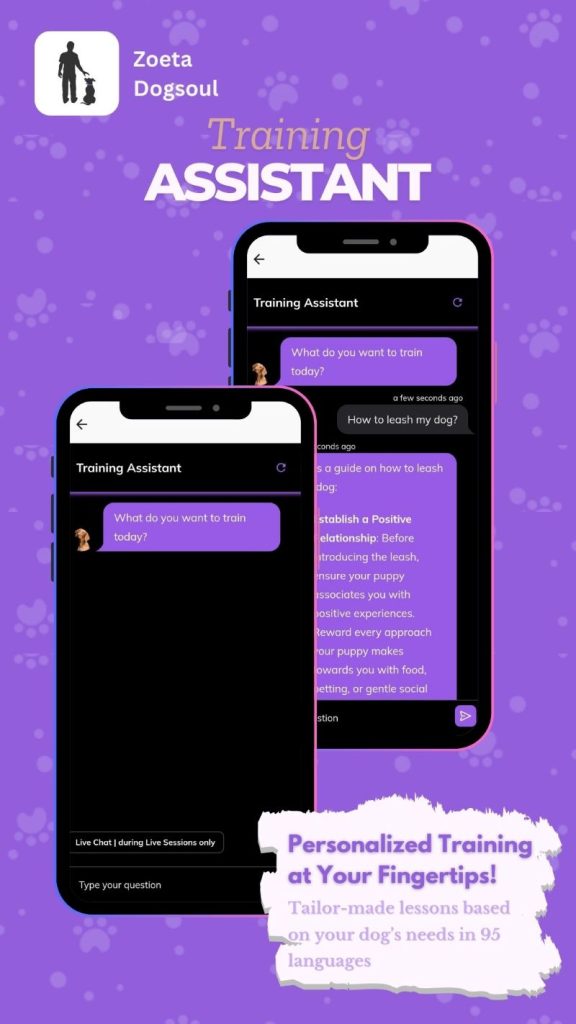
Behavioral Adaptations and Challenges
The Heightened Startle Response
Perhaps no behavioral change is more noticeable in deaf dogs than their startle response. Without auditory warnings, every unexpected touch or sudden appearance can trigger an intense reaction. This isn’t aggression or fearfulness—it’s a natural protective response to unexpected stimuli.
Imagine navigating your day without hearing approaching footsteps, doors opening, or people calling your name. You’d likely develop heightened vigilance too. Deaf dogs often position themselves strategically in rooms, choosing spots with good sightlines and walls behind them. They might sleep more lightly, waking at vibrations or shadows that wouldn’t disturb a hearing dog.
Managing this startle response requires thoughtfulness and consistency. Approaching a deaf dog requires visual announcement—a wave from a distance, a gentle stomp to create vibrations, or flicking lights on and off. Once they see you coming, their startle response diminishes dramatically. Teaching children and visitors these approach protocols prevents negative experiences and builds the dog’s confidence in social situations.
Enhanced Visual Attention and Environmental Scanning
Watch a deaf dog in a new environment, and you’ll witness remarkable visual processing in action. Their heads move constantly, scanning for information that hearing dogs gather passively through sound. This isn’t anxiety—it’s adaptation. They’re building mental maps of their surroundings using visual landmarks and movement patterns.
This enhanced visual attention becomes a training superpower when properly channeled. Deaf dogs often excel at reading human body language, picking up on subtle cues that hearing dogs might miss while distracted by sounds. They notice when you shift your weight before turning, when your breathing changes with emotion, when your shoulders tense with concern. This sensitivity creates opportunities for nuanced communication that transcends traditional training.
However, this constant visual vigilance can be exhausting. Deaf dogs may tire more quickly in visually stimulating environments, needing more frequent breaks during training or social activities. Recognizing these limits and providing quiet, visually calm spaces for rest supports their overall well-being.
Compensatory Sensory Enhancement
The absence of hearing doesn’t leave a void—it creates space for other senses to flourish. Deaf dogs develop extraordinary sensitivity to vibrations, feeling approaching people or vehicles through floor or ground tremors. Many deaf dog owners report their pets “know” when someone’s at the door before any visual cue, simply through vibrational awareness.
Their sense of smell often becomes more prominent in daily navigation and communication. While all dogs have exceptional olfactory capabilities, deaf dogs seem to rely more heavily on scent for information gathering, spending more time investigating scent marks and showing increased interest in olfactory enrichment activities.
Touch sensitivity increases too, making tactile communication particularly effective. Gentle, specific touches can convey complex messages once the dog learns their meaning. This enhanced tactile awareness means physical praise—gentle strokes, scritches, and massage—often carries more weight for deaf dogs than verbal praise ever could for hearing dogs.
Breed-Specific Training Adaptations
Working with High-Energy Breeds
When deafness combines with the intense drive of breeds like Dalmatians, Australian Cattle Dogs, or Border Collies, you’re working with a dog whose need for mental and physical stimulation hasn’t diminished—it’s simply rechanneled. These breeds’ genetic programming for work remains intact, demanding creative approaches to fulfill their instinctual needs.
Deaf Border Collies and Australian Cattle Dogs retain their powerful herding instincts, but without auditory input, these behaviors can intensify or misdirect. You might notice your deaf herder fixating visually on moving objects—children, cars, other pets—with laser focus. Channel this intensity through structured activities like treibball (pushing large balls into goals), agility training with visual cues, or advanced trick training that engages their problem-solving abilities. Their exceptional visual attention, already heightened by breeding, becomes almost supernatural when combined with deafness.
High-energy deaf dogs need significantly more enrichment than their hearing counterparts. A tired Dalmatian is a good Dalmatian, but a deaf tired Dalmatian requires mental exhaustion too. Incorporate multiple daily training sessions, scent work challenges, and visual puzzle games. These breeds often excel at pattern recognition games—teaching them to identify and respond to different colored cards or shapes provides hours of mental stimulation that satisfies their working drive.
Adapting for Breed Temperaments
Stubborn or independent breeds like Bulldogs, Bull Terriers, and Dogo Argentinos present unique challenges when deaf. Their natural inclination to make autonomous decisions intensifies without verbal redirection. You can’t simply call them off unwanted behaviors—you need their visual attention first, which they may deliberately avoid when they know they’re doing something questionable.
These breeds respond best to motivation-based training rather than correction-based approaches. Find their currency—whether it’s food, play, or affection—and use it liberally. Short, successful training sessions work better than lengthy ones that might trigger their stubborn streaks. When a deaf Bulldog decides they’re done with training, pushing further often backfires. Instead, end on a success, even if that means asking for one simple behavior they know well.
Sight hounds with deafness, such as Greyhounds or Whippets, present fascinating contradictions. Their vision, already exceptional, becomes their primary sense, but their independent nature means they might choose to ignore visual cues when prey drive activates. These dogs benefit from training that acknowledges their selective attention—using high-contrast visual markers, movement-based cues that trigger their motion detection, and understanding that their cooperation is often conditional on their interest level.
Size Considerations in Signal Training
Small breed deaf dogs face unique challenges in reading hand signals designed for larger dogs. A Chihuahua’s perspective from ground level means overhead signals might be missed entirely. Adapt your signals to their sightline—crouch down for training sessions, use signals at their eye level, and ensure your hands remain within their natural viewing angle.
For toy breeds, consider using finger signals rather than full arm movements. A small flick of your index finger can mean “sit” while two fingers can indicate “down.” These micro-signals work well for close-proximity training but require supplementation with larger signals for distance work. Some owners successfully use small flags or colorful objects as signal extensions, making their cues visible from farther away.
Large and giant breed deaf dogs require different physical considerations. Their height means they naturally see hand signals at waist level better than ground-level cues. However, their size can make startle responses more dangerous—a startled, jumping Great Dane poses different risks than a startled Papillon. Focus heavily on startle conditioning from puppyhood, teaching them to turn toward touch rather than jumping away. Use furniture or walls to guide positioning during training, preventing accidental knockdowns during enthusiastic responses.
Breed-Specific Enrichment Strategies
Terriers with deafness need outlets for their natural digging and hunting instincts. Create designated dig boxes filled with sand or soft soil, hiding toys or treats for discovery. Their inability to hear squeaky toys doesn’t diminish their prey drive—motion-activated toys or those with erratic movement patterns provide similar satisfaction.
Retrievers who are deaf still crave carrying and fetching but can’t hear the splash of a thrown ball in water or your calls to return. Use brightly colored, floating toys for water retrieval, and train a visual “fetch” signal combined with directional pointing. Many deaf retrievers excel at structured retrieve training where visual markers indicate hidden objects, engaging both their natural retrieving instinct and their enhanced visual processing.
Companion breeds like Cavalier King Charles Spaniels or Havanese with deafness often show increased anxiety when separated from their people, unable to hear reassuring voices from other rooms. These breeds benefit from visual contact maintenance—baby gates instead of closed doors, strategic mirror placement to see around corners, and potentially video calling systems that allow them to see you when you’re away. Their training should emphasize confidence-building exercises and gradual independence training to prevent excessive attachment anxiety. 🧠
Silent. Focused. Capable.
Deafness unlocks new strengths. Without sound, dogs lean into sight, touch, and smell, forging bonds built on visual clarity and trust rather than spoken cues.
Brains adapt with brilliance. Neurological shifts heighten visual awareness, allowing deaf dogs to notice details and signals that others might overlook, transforming silence into sensitivity.

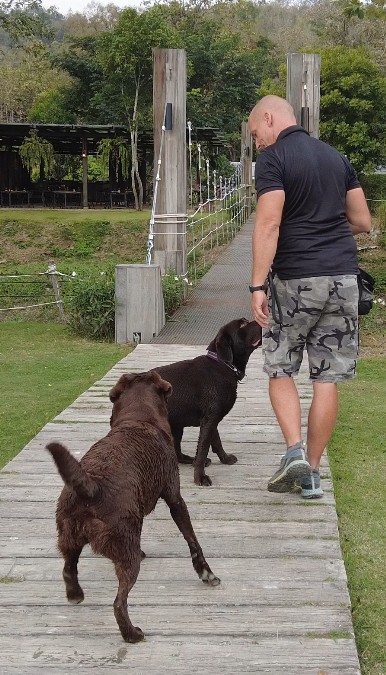
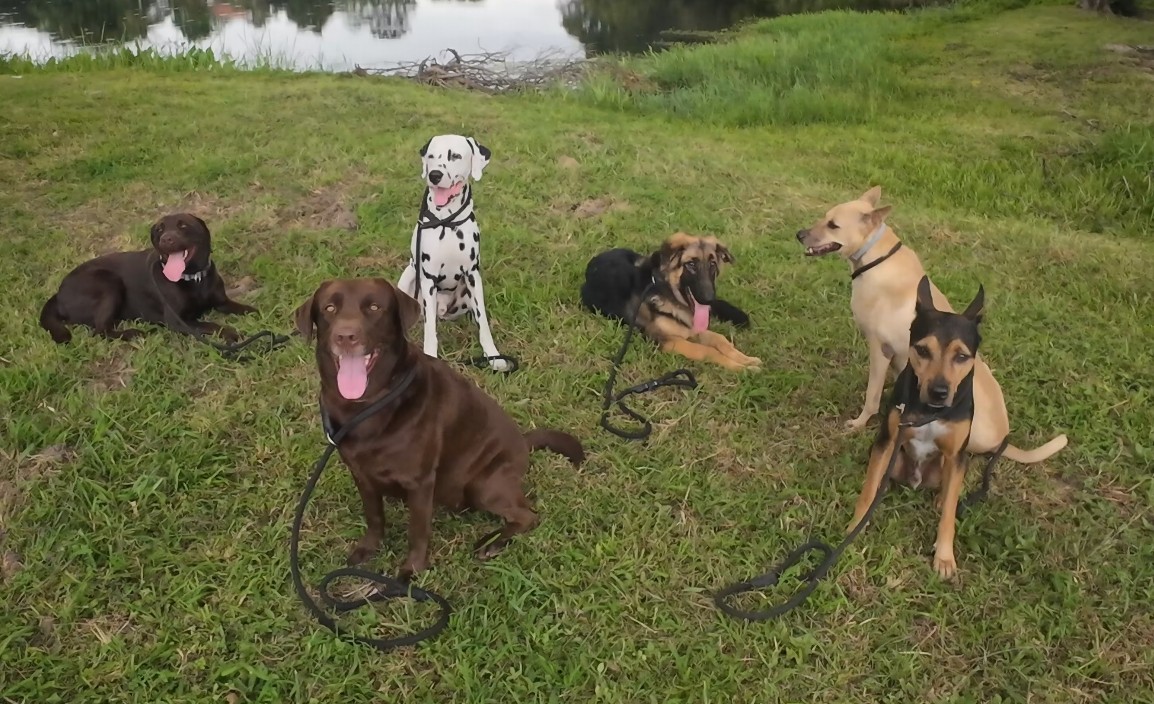
Learning remains limitless. With visual and tactile communication, deaf dogs master obedience, sports, and therapy roles—proving ability is shaped by connection, not hearing.
Communication Methods That Work
Mastering Visual Communication
The foundation of deaf dog training rests on clear, consistent visual communication. Hand signals become your primary language, and like any language, consistency and clarity determine success.
Essential Hand Signals to Teach First:
- “Watch Me” / Attention – Point to your eyes with two fingers, or tap your chest. This foundational cue enables all other communication
- “Sit” – Closed fist moving upward from your waist to chest level, or flat palm facing up with upward motion
- “Stay” – Open palm facing the dog like a stop sign, held steady at arm’s length
- “Come” – Sweeping arm motion toward your body, or patting your thigh enthusiastically
- “Down” – Open palm moving downward toward the ground, or pointing downward with your index finger
- “Good Dog” / Yes Marker – Thumbs up, open hand flash, or American Sign Language sign for “good”
- “No” / Stop – Wagging index finger side to side, or closed fist with slight shake
- “Free” / Release – Both hands spreading outward from center, or jazz hands motion
Each command needs a distinct, easily distinguishable hand signal that feels natural to you (ensuring consistency) and looks different enough from each other that your dog won’t confuse them even at a distance or in peripheral vision.
Your entire body becomes part of the conversation. Facial expressions carry enormous weight—a smile becomes praise, a furrowed brow might indicate mistakes. Deaf dogs become expert readers of human emotion through visual cues alone. This means maintaining awareness of your body language throughout training, ensuring your non-verbal communication aligns with your training goals.
Light signals open up long-distance communication possibilities. A flashlight becomes an invaluable tool for recall in low-light conditions or across large spaces. Some owners train specific flash patterns for different commands—two quick flashes for “come,” a steady beam for “wait.” Laser pointers, used responsibly (never for chasing), can direct attention or indicate specific locations. The key is conditioning these light signals as positive, attention-getting tools rather than startling interruptions.
Developing Tactile Communication Systems
Touch training creates an intimate, reliable communication channel that works regardless of visual conditions. Specific touches become words in your tactile vocabulary—a gentle tap on the shoulder means “look at me,” two taps on the back might mean “good job,” a specific sequence could indicate “let’s go outside.”
Building this tactile language requires patient conditioning. Start with one touch-meaning pair, using it consistently in clear contexts with immediate rewards. Once your dog reliably responds to that touch, add another. Most dogs can learn extensive tactile vocabularies, with some knowing dozens of distinct touch cues.
Vibration adds another dimension to tactile communication. Unlike shock, which causes pain, vibration simply creates a sensation similar to a phone buzzing. Modern vibration collars offer adjustable intensities, allowing you to find the gentlest level your dog notices. These devices should never be used for punishment—only as attention-getters or markers for desired behavior.
Ethical Use of Technology
Technology offers expanding possibilities for deaf dog communication, but ethical considerations must guide implementation. Vibration collars represent the most common technological aid, but their use requires careful conditioning and absolute commitment to positive reinforcement.
The conditioning process begins with the collar off the dog. Let them investigate it, rewarding curiosity and calm behavior. Once worn, start with the lowest vibration setting, immediately following vibration with high-value treats. The goal is creating a positive association—vibration predicts good things, never bad.
Emerging haptic technologies promise even more nuanced communication. Vests with multiple vibration points could convey different messages through location-specific stimulation. While still developing, these technologies hint at future possibilities for complex, real-time communication with deaf dogs.
Remember that technology supplements but doesn’t replace foundational visual and tactile training. The strongest communication systems use multiple channels, ensuring redundancy if one method fails or isn’t practical in a given situation. 🐾
Troubleshooting Common Training Challenges
“My Deaf Dog Won’t Maintain Eye Contact”
The foundation of all deaf dog training crumbles without reliable eye contact, yet this remains one of the most common struggles. Your dog isn’t being defiant—they’re often overwhelmed by visual stimuli or haven’t yet learned that watching you predicts good things.
Start by reducing environmental distractions drastically. Train in a bathroom or small, boring room where you’re the most interesting thing present. Hold a treat between your eyes and wait. The moment your dog’s gaze meets yours—even for a split second—mark with your visual signal and reward immediately. Don’t say anything (they can’t hear you anyway), don’t move excessively, just wait and reward eye contact.
Gradually increase the duration before marking, building from one second to two, then five. Once reliable indoors, practice in slightly more distracting environments. If your dog struggles, you’ve moved too fast—go back to the last successful environment and rebuild. Some deaf dogs benefit from “eye contact games” where you hide treats around the room but they can only search after making eye contact first. This builds voluntary checking-in behavior that becomes habitual over time.
For extremely visually distractible dogs, consider teaching a tactile cue for attention first. A gentle touch on the shoulder means “look at me,” immediately followed by a reward when they turn. This creates a reliable way to gain attention before transitioning to purely visual attention-getting methods.
Recognizing and Managing Training Frustration
Deaf dogs can’t hear verbal encouragement when struggling with new concepts, making frustration more likely and harder to address. Watch for early warning signs: excessive yawning, lip licking, turning away, scratching suddenly, or “shutting down” by lying down and refusing to engage.
When you notice frustration building, immediately switch to something your dog knows well and loves. Ask for their best trick, reward generously, and end the session on that positive note. Frustrated dogs don’t learn effectively—pushing through frustration creates negative associations with training that can take weeks to overcome.
Prevent frustration by breaking skills into smaller components than you would for hearing dogs. If teaching “roll over,” don’t expect the full behavior quickly. Reward looking at your signal, then following your hand slightly, then lying down, then shifting weight, and so on. Each micro-success builds confidence and maintains engagement. Sessions should be shorter but more frequent—five focused minutes beats twenty frustrating ones.
Consider your own emotional state too. Deaf dogs read body language and facial expressions with exceptional accuracy. Your frustration, even unexpressed verbally, transmits clearly. If you feel frustration building, end the session. Better to pause and return refreshed than to poison the training environment with negative emotions.
Understanding Behavioral Regression
You spent weeks perfecting your deaf dog’s recall, and suddenly they’re ignoring your visual cue entirely. Regression in deaf dogs often stems from different causes than in hearing dogs and requires specific approaches to address.
First, evaluate environmental changes. Has anything in their visual landscape shifted? New furniture, different lighting, or even seasonal changes affecting outdoor visibility can disrupt established visual cues. Deaf dogs rely on consistent visual contexts more than we realize. What seems like regression might be confusion due to altered visual circumstances.
Stress and overstimulation frequently trigger regression in deaf dogs. Without auditory warning of environmental changes, they may exist in a state of higher baseline stress, making them more susceptible to stress-induced learning disruptions. Look for life changes—new pets, household members, schedule shifts—that might be affecting performance. Address the stress source while temporarily reducing training expectations.
Sometimes regression indicates that the behavior was never truly solid. Deaf dogs are excellent at pattern recognition and might have been responding to unintended contextual cues rather than your intended signal. Rebuild from basics in various environments, ensuring they truly understand the signal rather than just the routine. This means practicing “sit” in every room, facing different directions, at different times of day, ensuring genuine understanding rather than contextual performance.
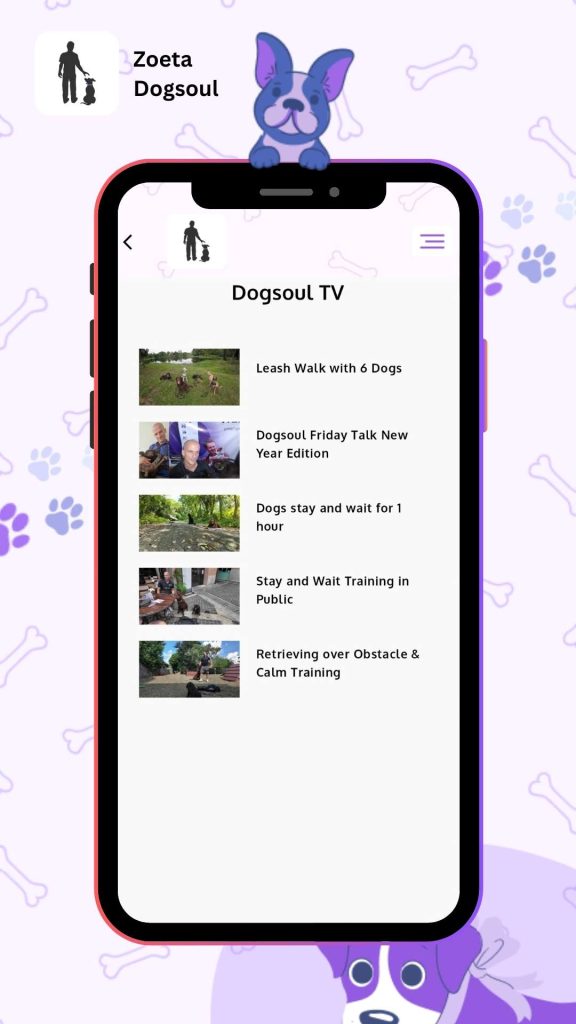
Addressing Reactivity to Other Dogs
Deaf dogs can develop reactivity to other dogs for unique reasons. Unable to hear calming signals like play growls or friendly barks, they might misinterpret neutral canine behavior as threatening. This misunderstanding can escalate quickly without auditory social cues to provide context.
Start desensitization at much greater distances than you would for hearing dogs. Your deaf dog needs time to visually process the other dog’s body language without feeling threatened. Find their threshold distance—where they notice other dogs but remain calm—and work there for weeks before gradually decreasing distance.
Teach a strong “look at that” protocol where your dog gets rewarded for calmly observing other dogs, then checking in with you. This builds positive associations while maintaining handler focus. Use highest-value treats exclusively for this work. The goal isn’t interaction but calm observation and voluntary disengagement.
Consider enlisting known, calm dogs for controlled training sessions. Parallel walking at safe distances, with both dogs focused on their handlers rather than each other, builds positive associations. Gradually decrease distance over multiple sessions, always ending before either dog shows stress. Some deaf dogs never become social butterflies, and that’s okay—management and avoidance are valid strategies when reactivity persists despite training.
Managing Night-Time Anxiety
Darkness presents unique challenges for deaf dogs who rely heavily on vision. When visual input diminishes, their primary communication and navigation channel closes, potentially triggering anxiety that manifests as restlessness, pacing, or distress.
Create a consistent bedtime routine with visual cues. Dimming lights gradually, rather than sudden darkness, helps transition. Consider leaving nightlights strategically placed to maintain some visual navigation ability. Some deaf dogs benefit from LED collars that provide gentle illumination, helping them see and be seen during final nighttime potty breaks.
Physical comfort becomes paramount when other senses are limited. Provide beds with raised edges or bolsters that offer tactile security. Placing beds against walls creates physical boundaries that compensate for reduced spatial awareness. Some deaf dogs sleep better with a worn piece of your clothing, using scent for comfort when sight and sound are unavailable.
For persistent night anxiety, consider crate training with modifications. Cover three sides of the crate to reduce visual stimuli while maintaining some visibility. Position the crate where your dog can see your bed if needed. Gradually increase covered sides as comfort builds. Some deaf dogs benefit from pressure wraps or weighted blankets that provide constant tactile input, reducing anxiety through deep pressure stimulation. 🧡
Puppy-Specific Protocols for Deaf Dogs
Building Foundation: The Attention Cue
Before any other training begins, establishing a reliable attention cue is paramount. Without the ability to call your dog’s name, you need a visual or tactile signal that consistently draws their focus to you.
Start in a quiet, distraction-free environment. Choose your attention signal—perhaps pointing to your eyes, a specific wave, or a gentle touch. When your dog naturally looks at you, immediately mark the behavior (with your chosen visual or tactile marker) and reward generously. Repeat this dozens of times across multiple sessions until your dog automatically looks at you when given the signal.
Gradually increase distractions, practicing in different rooms, then outside in the yard, eventually in public spaces. Each new environment requires stepping back in difficulty, rebuilding the association with patience. The goal is a dog who immediately orients to you regardless of environmental distractions when given the attention cue.
This foundation skill underlies everything else. Without reliable attention, no other cues can be effectively communicated. Invest heavily in this first step—the time spent here pays dividends throughout your dog’s training journey.
Emergency Recall: A Life-Saving Skill
For deaf dogs, a reliable emergency recall isn’t just convenient—it’s potentially life-saving. Unable to hear verbal calls or warnings, they need a recall system that works at distance and in any lighting condition.
Vibration collar recall requires methodical conditioning. Begin indoors with minimal distractions. Give a brief, gentle vibration, immediately followed by your visual “come” signal and an exceptionally high-value reward—think chunks of chicken, cheese, or whatever makes your dog’s eyes light up. Repeat this sequence dozens of times until vibration reliably predicts the recall cue and amazing rewards.
Gradually increase difficulty—practice with the dog facing away, add mild distractions, increase distance. Move to the yard, then quiet public spaces, always ensuring success before advancing. The recall must be bulletproof before trusting it in truly distracting or dangerous situations.
For non-technological recall, combine multiple sensory channels. A bright flashlight works well in low light, while a small mirror can reflect sunlight for daytime distance recalls. Some owners train their dogs to check in visually at regular intervals, creating natural recall opportunities without specific cues.
Leash Walking and Public Safety
Leash walking takes on additional importance for deaf dogs who cannot hear approaching dangers. The leash becomes not just a tether but a communication channel, conveying information through gentle pressure and movement.
Teach distinct leash cues for different situations. A gentle upward lift might mean “slow down,” while a slight pull to the side indicates a turn. These pressure cues, combined with visual signals when your dog checks in, create a robust communication system for navigating public spaces.
Traffic safety requires extra vigilance and training. Teach an automatic sit at every curb, regardless of traffic presence. This habit creates a natural pause for assessment before crossing. Train a “watch me” cue specifically for street crossings, ensuring your dog’s attention during vulnerable moments.
Consider equipment carefully. A well-fitted harness often works better than a collar, providing better control without restricting tactile communication through the neck. Bright, clearly marked “DEAF DOG” vests alert others to approach carefully and speak to you before interacting with your dog.
Enrichment Beyond Training
Mental stimulation prevents frustration and channels the intense focus of deaf dogs productively. Without auditory distractions, these dogs often show remarkable concentration on enrichment activities.
Scent work particularly suits deaf dogs. Their enhanced reliance on smell, combined with inability to hear verbal hints, makes them naturals at nose work. Start with simple “find it” games, hiding treats in increasingly challenging locations. Advanced scent work—identifying specific odors, tracking, or trailing—provides hours of engaging mental exercise.
Visual puzzles and games adapt easily for deaf dogs. Hide-and-seek works brilliantly when you teach a visual “search” cue. Puzzle feeders engage problem-solving skills without requiring auditory input. Some deaf dogs excel at observational learning, watching other dogs or humans demonstrate tasks before attempting them themselves.
Physical enrichment matters too, but requires modification. Dog parks need careful consideration—without ability to hear other dogs’ vocalizations, your deaf dog might miss important social cues. Structured playdates with known, compatible dogs often work better than free-for-all park situations. 🧡
Welfare and Quality of Life Considerations
Creating a Fear-Free Environment
The welfare of deaf dogs depends fundamentally on minimizing fear and maximizing predictability. Every aspect of their environment should be evaluated through the lens of a dog who cannot hear warnings or reassurances.
Safety Modifications for Your Home:
- Visual Alerts – Install flashing doorbell lights or vibrating floor pads near the dog’s common resting areas to signal visitors
- Safe Zones – Designate quiet corners with comfortable bedding where your dog won’t be accidentally startled, preferably with walls on two sides
- Night Lighting – Place gentle nightlights along hallways and near water bowls to help navigation in darkness
- Baby Gates – Use gates to control access to potentially dangerous areas like stairs when you’re not supervising
- Window Markers – Place decals at dog’s eye level on glass doors to prevent collisions during excited moments
- Textured Pathways – Consider different carpet textures or runners to help your dog navigate through tactile feedback
- Secure Fencing – Double-check all fencing for gaps and install spring-loaded gate closures to prevent accidental escapes
- Visual Barriers – Use curtains or frosted film on windows facing busy streets to reduce visual overstimulation
Sleeping arrangements deserve special consideration. Deaf dogs often prefer sleeping spots with walls behind them and clear sightlines to room entrances. This positioning allows them to rest deeply while maintaining visual awareness of their environment. Some benefit from slightly elevated beds that transmit vibrations more readily, alerting them to approaching people or pets.
Waking a deaf dog requires gentleness and consistency. Rather than touching them directly, try creating vibrations near them—gently bouncing the bed, tapping the floor nearby, or allowing your scent to drift over them. Many deaf dogs learn to wake more easily when they feel safe in their environment and trust their humans completely.
Household routines benefit from visual predictability. Keeping lights on consistent schedules, using visual cues for regular activities (flashing lights for dinner time), and maintaining predictable movement patterns through the house all contribute to a deaf dog’s sense of security.
Managing Multi-Pet Households
Introducing deaf dogs to other pets requires thoughtful orchestration. Hearing pets might not understand why the deaf dog doesn’t respond to their vocalizations, potentially leading to frustration or misunderstandings.
Supervised introductions allow you to facilitate communication between pets. You become the interpreter, helping the hearing pet understand that physical and visual cues work better than barking or meowing. Many deaf dogs develop remarkably close bonds with other pets who learn to communicate physically—pawing for attention, body-blocking for play, gentle mouthing for interaction.
Resource management becomes more critical in multi-pet households with deaf dogs. Without auditory warnings like growls, the deaf dog might inadvertently violate another pet’s boundaries around food, toys, or resting spots. Clear visual boundaries, separate feeding areas, and supervised toy play prevent conflicts while relationships develop.
Consider teaching hearing pets to alert you to the deaf dog’s needs. Many hearing dogs naturally begin “telling” their humans when the deaf dog wants inside, needs water, or requires attention. This helpful behavior should be encouraged and rewarded, strengthening the inter-pet bond while improving the deaf dog’s quality of life.
Balancing Freedom with Safety
The question of off-leash freedom challenges deaf dog owners. The joy of running freely conflicts with inability to hear recalls or warnings. Finding this balance requires honest assessment of your dog’s training, your environment, and your risk tolerance.
Secured areas provide the safest off-leash experiences. Double-check fencing for gaps, ensure gates latch securely, and regularly inspect for potential escape routes. Even in fenced yards, supervision remains important—deaf dogs can’t hear you call if they find an unexpected exit.
Long lines offer compromise between freedom and control. A 30-50 foot leash allows substantial exploration while maintaining physical connection for emergency intervention. This works particularly well in open fields or beaches where you can see your dog constantly but might not be able to get their visual attention immediately.
GPS trackers provide additional security for those allowing carefully managed off-leash time. While not substitutes for training and supervision, these devices offer peace of mind and recovery assistance if the worst happens. Choose models with long battery life and reliable connectivity in your usual walking areas.
The Owner’s Role in Success
Consistency: The Foundation of Understanding
Your consistency directly determines your deaf dog’s success. Every family member, friend, or professional who interacts with your dog must use identical signals for each cue. This isn’t just helpful—it’s essential for clear communication.
Create a visual dictionary documenting every hand signal, touch cue, and light signal your dog knows. Include photos or videos demonstrating proper execution. Share this with pet sitters, veterinarians, groomers, and anyone else who might need to communicate with your dog. This reference ensures consistency even when you’re not present.
Regular family training sessions maintain consistency across handlers. Practice together weekly, ensuring everyone’s signals remain clear and identical. Children especially benefit from supervised practice, learning to communicate clearly and respectfully with the deaf dog while building invaluable empathy and non-verbal communication skills.
When inconsistency creeps in—and it will—address it immediately. Deaf dogs can’t ask for clarification when confused by mixed signals. If you notice your dog’s responses becoming unreliable, audit your family’s signal use. Often, small variations have crept in, creating confusion that’s easily resolved once identified.
Emotional Regulation and Patience
Training a deaf dog demands exceptional emotional regulation. Your frustration, even if unexpressed verbally, transmits through body language that your visually-focused dog reads clearly. Learning to maintain calm, positive energy regardless of training challenges directly impacts your dog’s learning and confidence.
Progress might seem slow initially. Without verbal encouragement, you can’t cheer your dog on or offer verbal corrections. Every communication requires getting visual attention first, then conveying your message clearly. This multi-step process takes time, and rushing leads to confusion and setback.
Develop personal strategies for maintaining patience. Some trainers find counting breaths helps maintain calm during challenging sessions. Others use mental mantras, reminding themselves that their deaf dog is doing their best with the information provided. Whatever works for you, prioritize emotional stability—your deaf dog depends on your clear, calm communication.
Celebrate small victories enthusiastically. Your deaf dog might not hear verbal praise, but they absolutely feel your joy through body language, facial expressions, and physical affection. Let your excitement show visually—jump, clap, smile broadly. This visual celebration becomes its own reward, strengthening your bond while reinforcing desired behaviors.
Building Support Networks
Connecting with other deaf dog owners provides invaluable support and practical advice. Online communities offer 24/7 access to experienced handlers who understand unique challenges and celebrate special victories that others might not appreciate.
Local deaf dog groups, where available, provide socialization opportunities for both dogs and owners. Watching experienced handlers work with their deaf dogs offers learning opportunities that videos and books can’t fully capture. These groups often organize specialized training sessions, adapting traditional classes for visual learners.
Professional support shouldn’t be overlooked. Trainers experienced with deaf dogs bring specialized knowledge and techniques. They can identify communication breakdowns you might miss and suggest modifications tailored to your specific dog’s needs. Veterinary behaviorists can address any behavioral concerns that might accompany or seem related to deafness.
Share your journey with others. Whether through social media, blogs, or local presentations, telling your deaf dog’s story helps dispel myths and might inspire others to adopt deaf dogs. Your experience becomes part of a larger narrative showing that deaf dogs aren’t disabled—they’re differently abled, capable of full, rich lives with appropriate support. 🧠
Senior Deaf Dogs: Special Considerations
Age-Related Changes and Adaptations
When senior dogs lose their hearing, whether gradually or suddenly, they face unique challenges different from dogs born deaf. The familiar auditory landscape they’ve navigated for years suddenly shifts, potentially causing confusion, anxiety, or depression.
Watch for signs of hearing loss in aging dogs: not responding to their name, sleeping through previously alerting sounds, startling more easily when touched, or seeming confused in familiar situations. Early recognition allows proactive adaptation, easing the transition to a silent world.
Transitioning a newly deaf senior requires patience and empathy. Maintain routines as much as possible while gradually introducing visual and tactile cues alongside familiar verbal commands. Many senior dogs already know hand signals paired with verbal cues, making the transition smoother than expected.
Physical changes accompanying aging affect training approaches. Arthritis might limit mobility for hand signals requiring looking up or turning quickly. Declining vision means signals must be larger, clearer, and presented within their visual field. Cognitive changes might affect learning speed, requiring more repetition and shorter training sessions.
Medical Management and Comfort
Senior deaf dogs often face multiple health challenges requiring integrated management approaches. Regular veterinary checkups become even more critical when you can’t rely on verbal communication to assess comfort or pain.
Pain management takes on special importance. Without ability to hear verbal comfort or explanation for necessary medical procedures, senior deaf dogs might experience increased anxiety during veterinary visits or home treatments. Work with your veterinarian to develop low-stress handling techniques and consider anti-anxiety medications for particularly stressful medical procedures.
Environmental modifications support aging deaf dogs. Non-slip surfaces prevent falls they can’t hear coming. Night lights help those with declining vision navigate darkness safely. Ramps replace stairs when jumping becomes difficult. These modifications maintain independence while ensuring safety.
End-of-life considerations require thoughtful planning. Quality of life assessments must account for the dog’s inability to hear verbal comfort during decline. Some owners find that deaf dogs seem less anxious during final days, unable to hear their humans’ emotional distress. Focus on physical comfort, visual presence, and gentle touch to convey love and support during this difficult time.
Conclusion: Is a Deaf Dog Right for You?
Training and living with a deaf dog offers unique rewards that extend far beyond basic pet ownership. These remarkable animals teach us about resilience, adaptation, and the power of non-verbal communication. They demonstrate daily that perceived limitations often become hidden strengths when approached with creativity and commitment.
Questions to Ask Yourself Before Adopting a Deaf Dog:
- Time and Training – Can you dedicate extra time initially for intensive visual communication training? Are you patient enough to repeat lessons without verbal encouragement?
- Family Commitment – Will every family member learn and consistently use the same hand signals and approach methods? Are children old enough to understand gentle wake-up protocols?
- Environmental Safety – Do you have secure fencing or commit to leash-only outings? Can you maintain the vigilance needed in public spaces?
- Financial Considerations – Are you prepared for potential costs like professional training, vibration collars, or home modifications for safety?
- Lifestyle Factors – Does your schedule allow for the structured routine that helps deaf dogs feel secure? Can you provide adequate mental stimulation through visual and scent-based enrichment?
- Emergency Preparedness – Have you considered how you’ll manage emergencies when verbal recall isn’t an option? Do you have backup plans for unexpected situations?
- Long-term Commitment – Are you prepared to be an advocate and educator when others don’t understand your dog’s needs? Will you maintain training consistency throughout your dog’s lifetime?
- Support System – Do you have access to trainers experienced with deaf dogs? Are there local or online communities you can join for support?
Consider honestly whether your lifestyle accommodates a deaf dog’s needs. The practical requirements are substantial but not insurmountable. Secure fencing, commitment to leash walking, and investment in training time and potentially professional support all factor into the decision. Yet these investments pale compared to the returns: unwavering attention, deep bonding, and the satisfaction of overcoming communication barriers through patience and innovation.
Deaf dogs excel in many areas—therapy work, where their calm presence and lack of auditory distraction become assets; scent work, where their enhanced olfactory focus gives them advantages; and as family pets, where their intense bonding and visual attention create exceptionally close relationships. They’re not limited by their deafness but rather transformed by it into uniquely capable companions.
Success with a deaf dog depends not on the absence of challenges but on the presence of commitment, creativity, and compassion. These dogs don’t need our pity—they need our understanding. They don’t require special treatment—they require appropriate communication. When provided with these tools, deaf dogs live full, joyful, engaged lives that enrich their human families immeasurably.
The journey of training a deaf dog transforms both ends of the leash. Owners develop patience, non-verbal communication skills, and increased awareness of their environment. Dogs develop confidence, skills, and deep trust in their human partners. Together, they create a language unique to their relationship—a silent conversation of love, respect, and understanding that speaks louder than words ever could.
Whether you’re embarking on this journey with a deaf puppy, adapting to a senior dog’s hearing loss, or considering adopting a deaf rescue, know that the path ahead, while different from the typical dog-owner journey, leads to equally beautiful destinations. The silence between you and your deaf dog isn’t empty—it’s full of possibility, connection, and a special kind of magic that only those who’ve experienced it truly understand. In the end, you might find that your deaf dog hears you perfectly—just not with their ears, but with their heart. 🧡🐾

